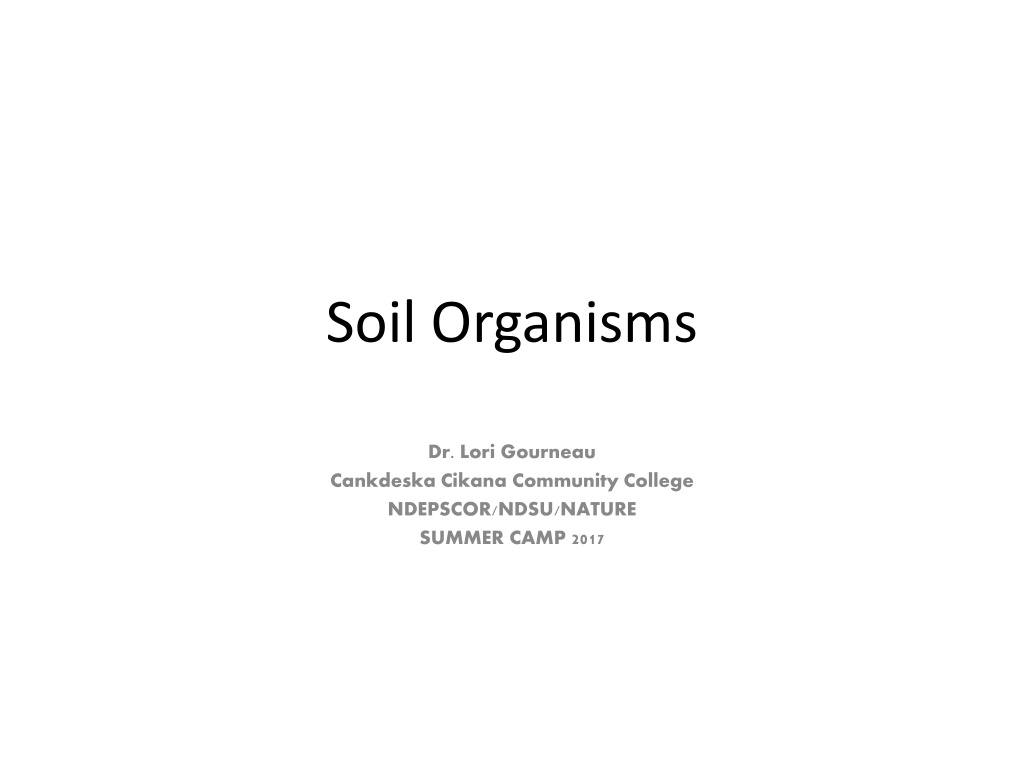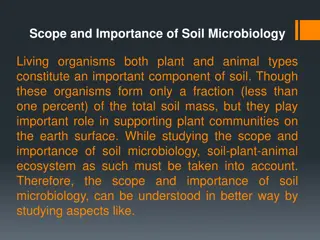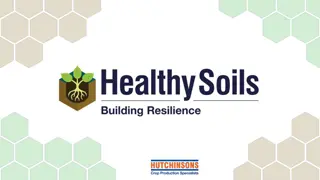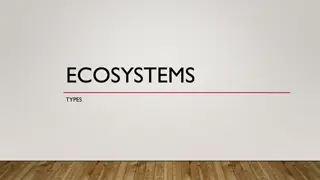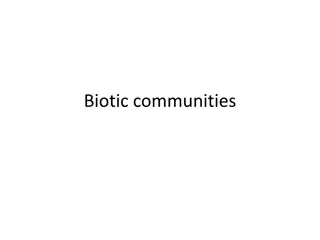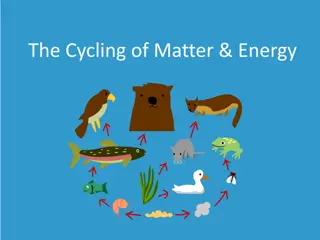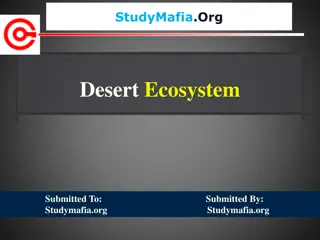Unveiling the Vital Role of Soil Organisms in Environmental Ecosystems
Delve into the intricate world of soil organisms as Dr. Lori Gourneau explores the diversity and significance of these microscopic beings at Cankdeska Cikana Community College. Uncover the staggering numbers of bacteria, fungi, protozoa, and more living beneath our feet, contributing to soil health, plant growth, and nutrient cycling. Discover how these tiny creatures shape the very foundation of life on Earth.
Download Presentation

Please find below an Image/Link to download the presentation.
The content on the website is provided AS IS for your information and personal use only. It may not be sold, licensed, or shared on other websites without obtaining consent from the author. Download presentation by click this link. If you encounter any issues during the download, it is possible that the publisher has removed the file from their server.
E N D
Presentation Transcript
Soil Organisms Dr. Lori Gourneau Cankdeska Cikana Community College NDEPSCOR/NDSU/NATURE SUMMER CAMP 2017
Soil Organisms Soil is full of living organisms How many organism are in the soil? What types of organisms are in the soil? Why are they important?
Soil is Alive How many organism are in the soil? 10^7 to 10^9 bacteria per cm3 10 to 1000 protozoa per cm3 10^3 to 10^6 fungi per cm3 1.3 gm soil = 1 cm3
The Five Kingdoms: soil organisms Animalia Plantae Fungi Protista Monera (bacteria)
Facts: Soil Organisms Soil Microorganisms - Small, Plentiful, Powerful Even with a decent microscope soil bacteria, if visible, are only specks. To really see their form you need an electron microscope - definitely outside the budget range of the average gardener or farmer. Consider this: 250,000 bacteria could fit on a spot the size of a period. A billion bacteria live in a single gram of soil. A healthy acre of land will be home to about a ton and a half soil bacteria, equivalent to about two cows worth of life below the ground on four average size residential lots. We think tropical rainforests have incredible biodiversity. About half the 10 million plant, animal and insect species are found there. According to calculations published in Science in 2005, researchers at the Los Alamos National Laboratory estimated that a single gram of pristine soil contains close to a million distinct species of bacteria. Reference: http://www.bing.com/images/search?q=Living+Organisms+in+Soil&FORM=IRBPRS&=0
Function: Soil Organisms Bacteria and Fungi are the foundations of the web They help to hold nutrients in the root zone for your plants Build soil structure so that water both drains and holds better Help prevent soil erosion Produces plant stimulating hormones They help to fix nitrogen from nitrogen gas to plant usable nitrogen They help to make phosphorous available for plants Open the soil so that plant roots can penetrate more deeply Compete with bad guy bacteria and fungi thus keeping them in check and helping plants fight disease or stay disease free The other soil organisms, the protozoa, nematodes and other larger members of the soil food web eat the bacteria and fungi and in doing so release the nutrients the plants need when they need them. Pretty amazing really. Reference: http://www.the-compost-gardener.com/soil-organisms.html
Soil Organisms: microorganisms Bacterial Shapes
Soil Bacteria Prokaryotic, unicellular, many shapes Most numerous of soil organism
Actinomycetes Special class of bacteria, prokaryotic Look more like fungi Give the earthy smell of fresh soil geosmin (organic compound) produced by actinobacteria, dominant in alkaline (basic) soils
Soil Fungi Live off dead or living plant, animal, microbial remains Yeasts, filamentous fungi, mushrooms, molds
Soil Protists Unicellular organism Act as grazers, prey on bacteria & fungi
Soil Plants Algae Microscopic plants in soil Algal blooms- green carpet of growth on warm moist soil
Soil Animals Burrowing animals: moles, mice Earthworms: digest plant & animal remains Arthropods: ants, termites, centipedes Nematodes: microscopic worms- eat decaying organic material
Soil Organisms Activity #2A: 20-30 minutes Soil Organism Worksheet: Please fill out the table completely using your computer as a resource. Answer the questions at the bottom of the table. Discussion
